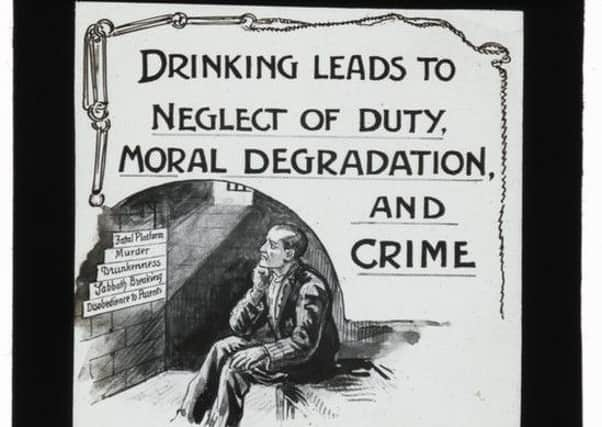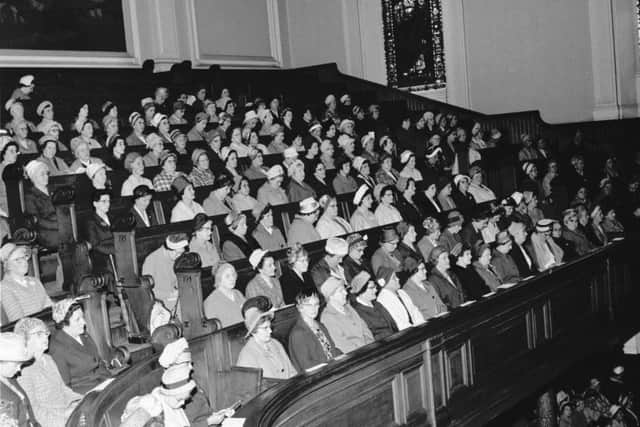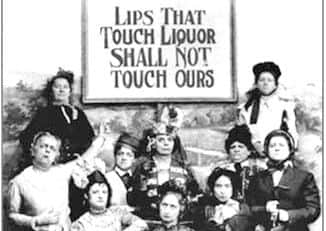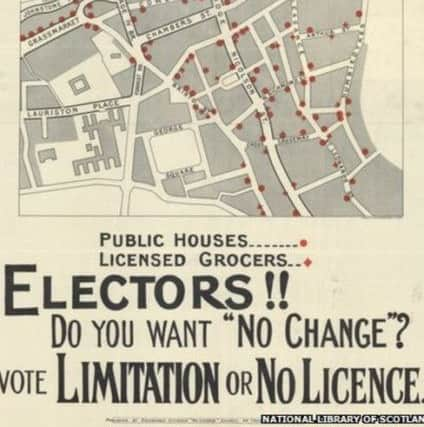The history of Scotland's '˜dry' temperance towns


Kilsyth, Kirkintilloch, Wick and Lerwick were amongst those turned dry after local vetoes were held following the passing of the 1913 Temperance Act.
A further 35 ballots led to limits on alcohol sales.
While voters were hesitant to enforce wholesale changes on the nation’s habits, the hangover from the days that the Temperance Movement bore both social and political influence lingered long in some parts.


Advertisement
Hide AdAdvertisement
Hide AdKilmacolm in Inverclyde, for example, did not have a pub until 1998 when an old waiting room at the train station was converted into The Pullman.
People travelled to enjoy the grand opening, which brought an end to more than 70 years of “dry” Kilmalcolm.
It was a period that saw the village’s Buchan Arms Hotel shut down and taken over by the parish, which turned it into a community centre.
The ban also led to hardships at the former Hydropathic Hotel, which also closed it doors as a new, sober social mood took hold.


Before the veto, there had been a slow but powerful movement building in Scotland against alcohol, which was linked to just about ever social pain in Scotland - from loutishness and poverty to crime and domestic violence.
The temperance movement in Scotland began in earnest around 1830 inspired by the prohibition movement of the United States.
Originally it focussed on reducing consumption of strong or “ardent” spirits with campaigners finding a natural home in Glasgow, a city whose population was bulging due to its heavy industrial activity.


Advertisement
Hide AdAdvertisement
Hide AdPaisley, Greenock and the mining towns of Lanarkshire and Ayrshire also becoming a focus for temperance campaigning.
The movement moved to a harder message in 1844 when the Scottish Temperance League was formed in Falkirk, with total abstinence preached.
League members pledged themselves to abstain from all intoxicating beverages, not simply ardent spirits, in a promise dubbed “the long pledge.”
It came amid growing concern of the effects of alcohol on safety, family life and society.


Jack S Blocker, in Alcohol and Temperance in Modern History, notes that a parliamentary report on drink-related arrests between 1831 and 1851, it found “Glasgow was three times more drunken than Edinburgh and five times more drunk than London.”
He also noted that Scots “like the Irish and unlike the English and Welsh, ordinary people drank a great deal of whisky.”
Around this time in Glasgow, there was one liquor outlet for every 150 people, supplemented by the illegal shabeens that served up a mixture of whisky and meths.
Advertisement
Hide AdAdvertisement
Hide AdAs the Temperance Movement - a myriad of organisations rooted in Christianity, Charitism, Socialism and Women’s Suffrage - gathered momentum, new members would be urged to make a public pledge to abstinence in a church or temperance meeting.
There was, of course, naming and shaming of those who broke their promise.
While public houses closed as the abstinence message spread, new business often flourished. The Mathers Hotel in Dundee, for example, was known as a temperance hotel which did not sell alcohol until well into the 1950s.


The temperance movement in Scotland also supported the Gothenburg system, which ran pubs that were unwelcoming and did not encourage alcohol consumption - a direct response to the highly decorated Victorian-style drinking palaces where men - and sometimes women - could lose many an hour.
Incentives were paid to sell food and soft drinks and profits were put back into community projects, such as libraries. These “Goths” took hold primarily in Fife and other mining areas.
The Prestoungrange Gothenburg in Prestonpans is one survivor of the Goth movement, and has recently been completely refurbished.
Coffeehouses too became popular amongst temperance folk. Glasgow had 20 by the 1840s, including many in the Cranston’s chain.
Advertisement
Hide AdAdvertisement
Hide AdThe work of the societies devoted to abstinence and moderation were highly regarded by some for their influence on social reform and politically the movement was gaining levers.
On peer of the day commented : “Without these societies we should be involved in such an ocean of intoxication, violence and sin as would make this country quite uninhabitable.”
Forbes Mackenzie, a Conservative MP, temperance reformer and son of Colin, writer to the signet in Edinburgh, introduced the Public Houses (Scotland) Bill in 1853 which, once enacted, forced the closure of pubs in Scotland at 10pm on weekdays and on Sundays.
In 1906, the landslide Liberal victory led to the legislation that allowed communities to veto alcohol consumption with the Temperance Scotland Act passed in 1913.
But perhaps the greatest force for abstinence came with WWI, when tight restrictions were placed on alcohol sale to preserve resources.
The Defence of the Realm Act 1914 led to stricter controls on pub hours, beer was watered down and taxed an extra penny a pint.
Many publicans also lost incentives to sell drink instead preferring to support the armaments industry and keeping workers sober. A ‘No Treating” rule between 1916 and 1919 forbid the buying of rounds of drinks.
Advertisement
Hide AdAdvertisement
Hide AdThe Temperance Movement seized on the mood and in 1920 vast numbers of local votes went ahead.
According to Blocker, the movement experienced an “extraordinary victory” when Edwin Scrymgeour was elected as a Scottish Prohibitionist Party MP for the Dundee constituency.
However, it appeared that his success was limited and he was defeated in 1931.
By WWII, the movement was seen as increasingly irrelevant and archane. Tens of thousands men left for the battlefields once again and the government did not impose the same alcohol restrictions as seen during WWI.
The movement was seen as the preserve of the middle classes and with Scots-at-large unconvinced for the need for controls.
As Blocker said: “Voters were reluctant to endorse change through the local veto, particularly in working class districts.”
Following 1920, just over 500 towns for no change to alcohol laws.
Advertisement
Hide AdAdvertisement
Hide AdIt took until 1976 for parliament to dismantle the legislation set out by Mackenzie, with some parts of Scotland - such as Kilmacolm - taking longer to embrace the new liberties.
